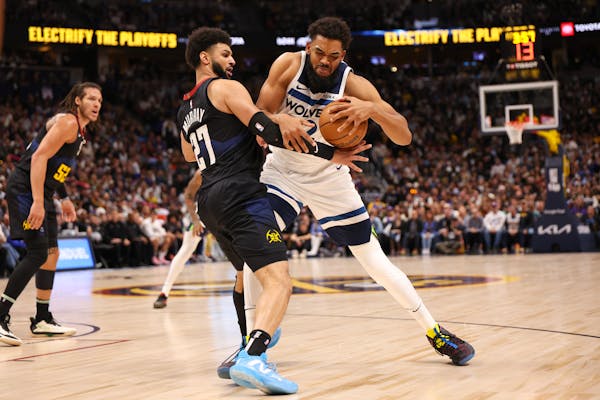Nationwide last year, nearly 600 Pheasants Forever fundraising banquets were held, 69 in Minnesota. The gatherings attracted most of the organization's approximately 130,000 members, helping to raise a large chunk of its $82 million annual budget.
Unfortunate as pheasant-population declines have been in recent years, PF members next year are expected to host chapter banquets at an even faster pace.
These and other, similar efforts are testament to the high regard PF members hold for a game bird that many consider superior to all others — and testament also to the conviction with which they join the upland-habitat-conservation battle, often against long odds.
Saturday, the first day of the state's 2015 ringneck season that is expected to be significantly improved over last year, the Glacial Ridge PF Chapter in Pope County will hold its annual banquet, continuing what is now a 30-year-plus Minnesota tradition.
In 1983, the first PF fundraising banquet was held at the old Prom Ballroom on University Avenue in St. Paul.
That initial banquet was a big success, attracting about 800 conservationists, including then Gov. Rudy Perpich, Department of Natural Resources Commissioner Joe Alexander and a who's-who of DNR and legislative leaders.
The event raised about $25,000, enough to hire Jeff Finden as the group's full-time executive director. Soon, a second PF banquet was held in Willmar, in Kandiyohi County, that also raised about $25,000.
Today, when chapter members — whether in Minnesota, Montana, Michigan or elsewhere — plan a banquet, they generally know what to expect: the number of guests who will attend and how much money will be raised.
Organizers of the group's first banquet were far less certain whether the event would succeed, gain only nominal support or fail spectacularly.
Perhaps most amazing about that initial event were the scores of volunteers who joined to organize it, many of whom were veterans of similar fundraisers for Ducks Unlimited.
Seed money to help get the fledgling group off the ground had been donated by two conservationist-businessmen. One was the late Bob Naegele, owner of an outdoor advertising company that bore his name. The other was the late Vern Aanenson, owner of Old Dutch Foods. Both were big-time duck hunters who had long been significant contributors to Ducks Unlimited.
The late Jimmy Robinson had strong-armed his close friends, Naegele and Aanenson, for the money.
Jimmy was famous for the millions of dollars he helped raise for Ducks Unlimited, well-known also for his Sports Afield duck camp in St. Ambrose, Manitoba, and for the aerial duck surveys he conducted in Canada every summer for Sports Afield magazine.
A character unlike any other, Jimmy impulsively called Naegele and Aanenson one day while he and I talked about the need for a pheasant group.
"There's a young guy here who needs money for pheasants," he barked first to Naegele, then Aanenson. "Send him $3,000. And that's just a start!"
Jimmy was among people sitting at the head table at the first PF banquet. Laws governing smoking were different then, and he continually puffed on a big cigar, which was typical for him. He also addressed the crowd briefly, and his presence went a long way toward validating the effort.
Perpich also spoke that night, as did Alexander. Organizers considered their comments big deals because, again, no one knew exactly where this group was headed, or whether it might fade from sight in a matter of months.
But such was — and remains — the appeal of pheasants among wingshooters that the idea of forming a group that might help return these birds to the numbers they enjoyed during the Soil Bank days of the 1950s spread like wildfire.
Following formation of the Kandiyohi County chapter, similar chapters were formed in Goodhue, Lyon, Jackson, Anoka, Swift and Rock counties.
Helping to fuel the growth was a unique money-sharing agreement that guided expenditure of chapter funds. Exclusive of membership fees, which were forwarded to the national office, local chapters kept all money raised for local habitat work.
This was possible because pheasants, unlike ducks, are resident species. So there was no need to spend money for habitat on far-flung Canadian breeding grounds, as is often the case for waterfowl.
So successful have Minnesota PF members been that the Nobles County chapter was recognized last year as the most effective among all chapters nationwide in habitat development.
The Nobles group spent $1.3 million for habitat in 2014, including two land purchases that permanently conserved 222 acres of wild land.
Given the hard times that pheasants have faced recently, it might be reasonable to assume that interest among hunters in saving this spectacularly beautiful bird might wane.
So far, that hasn't been the case
With luck, it never will be.
Dennis Anderson • danderson@startribune.com
Anderson: For opener, fishing will be fantastic — and catching will be great

Anderson: Building a new Waterville fish hatchery will help shorten the time between bites

Anderson: Trailblazing sonar will be in thousands of boats for opener


